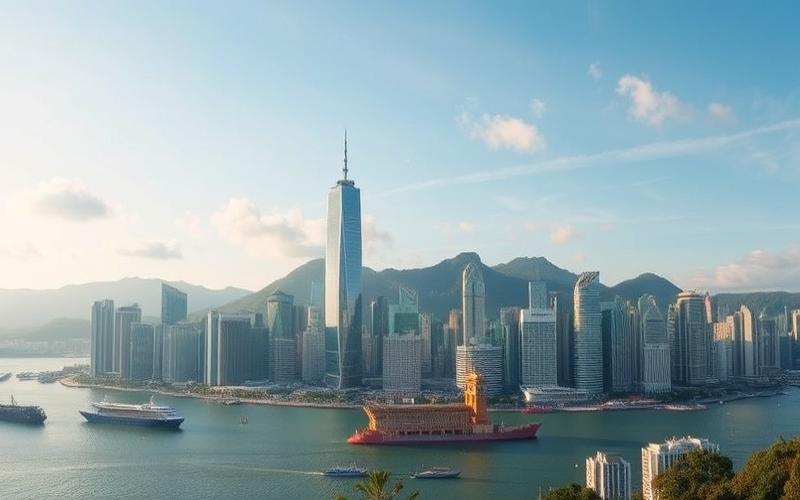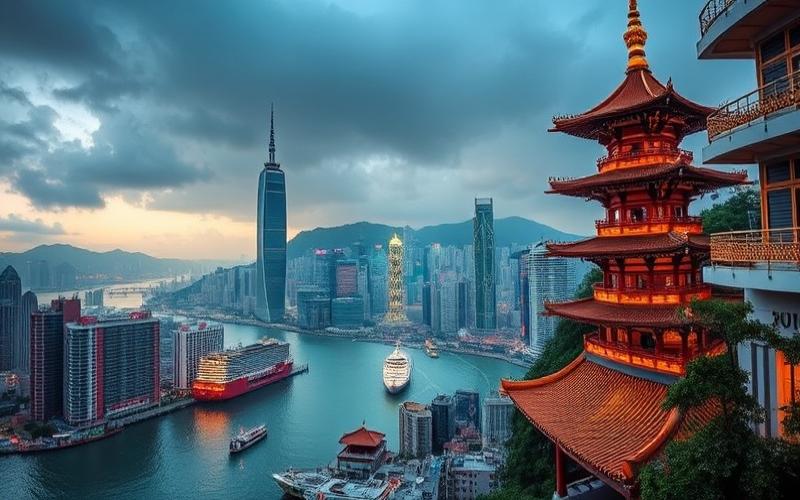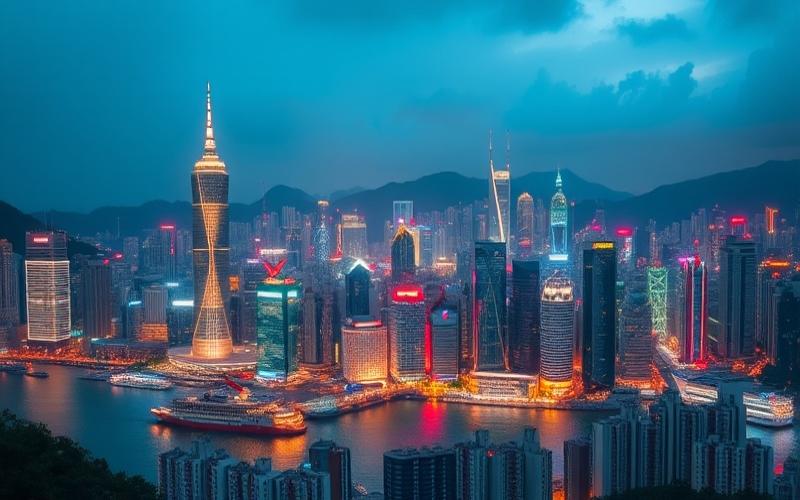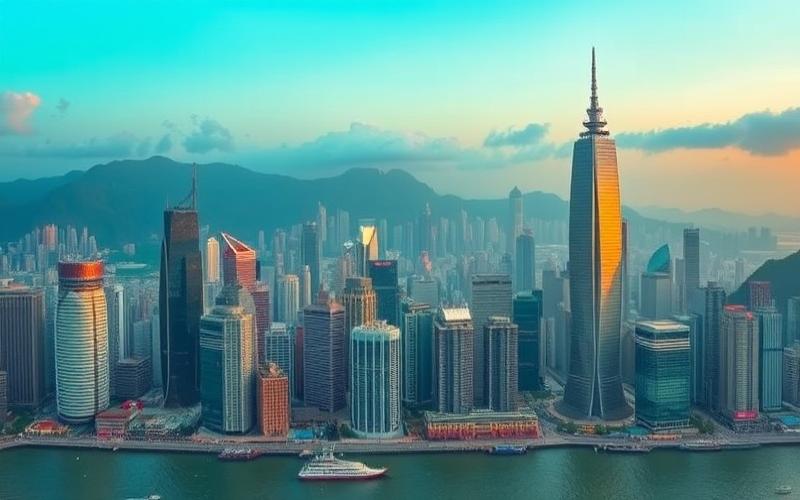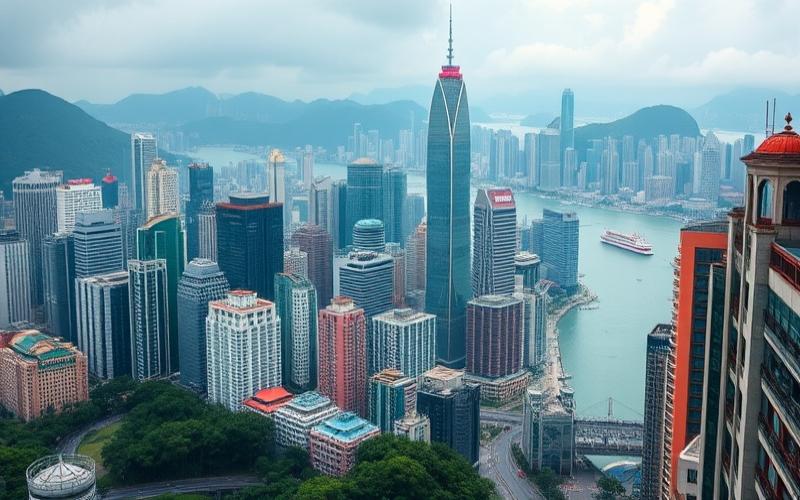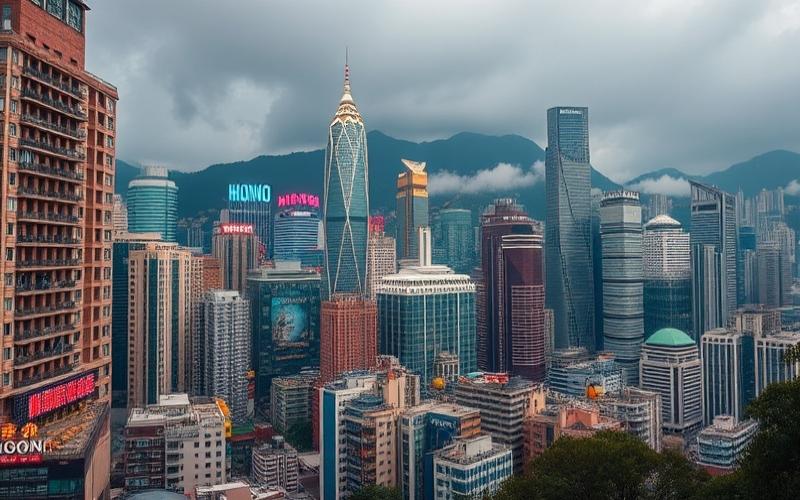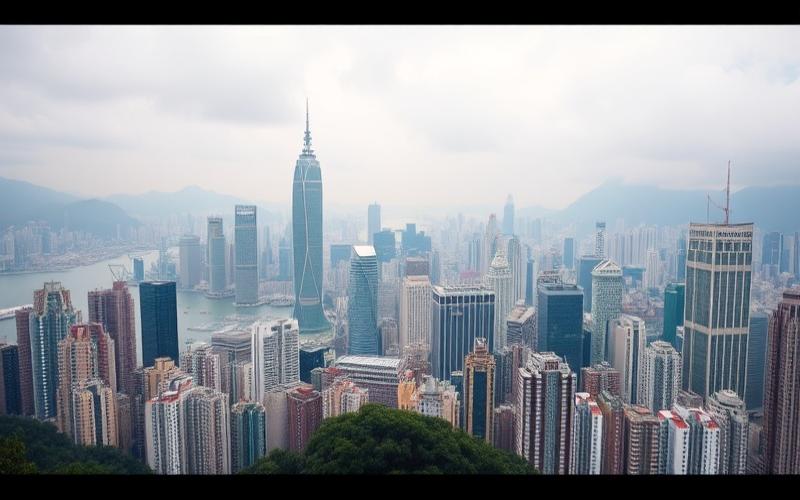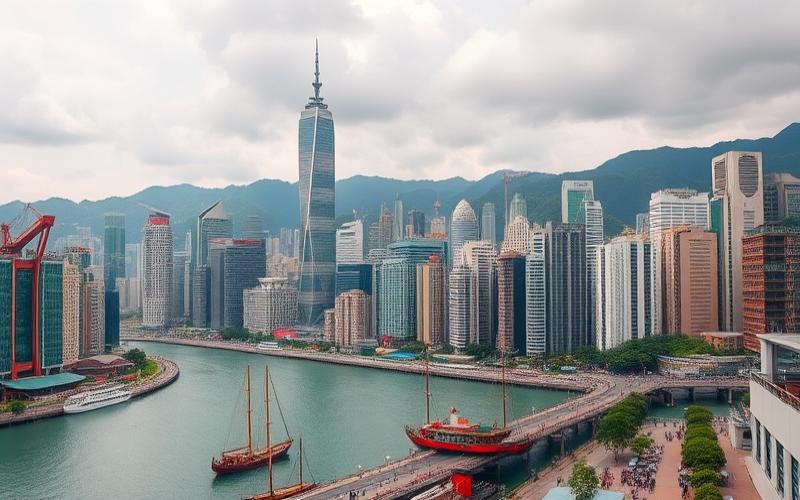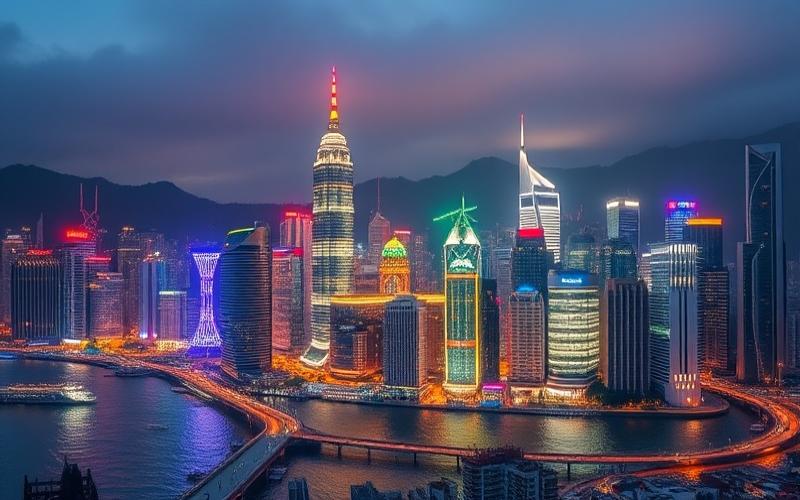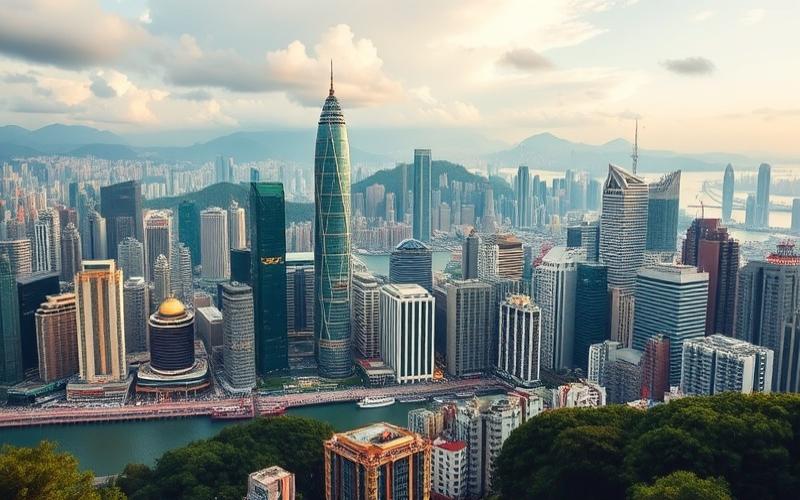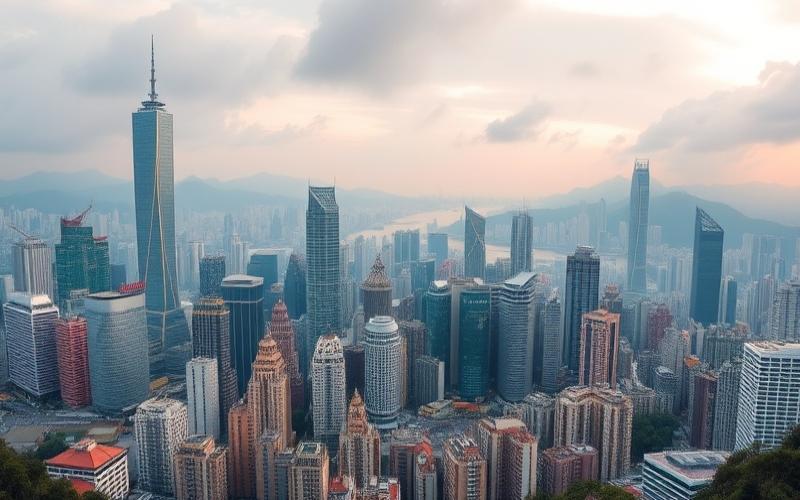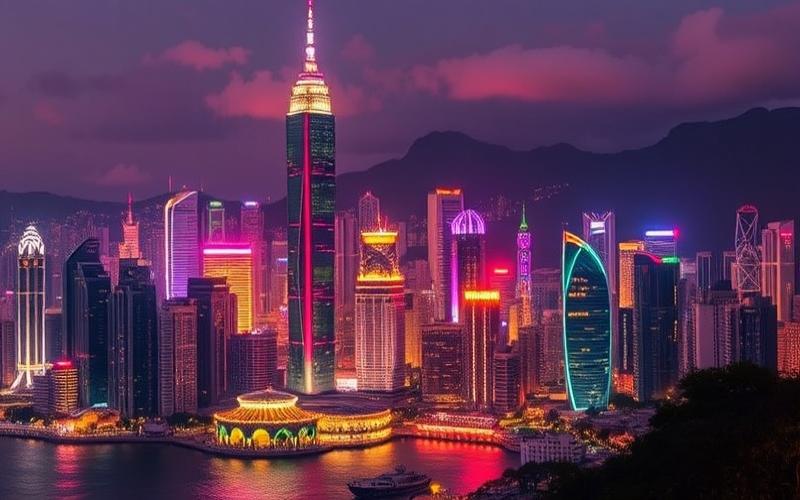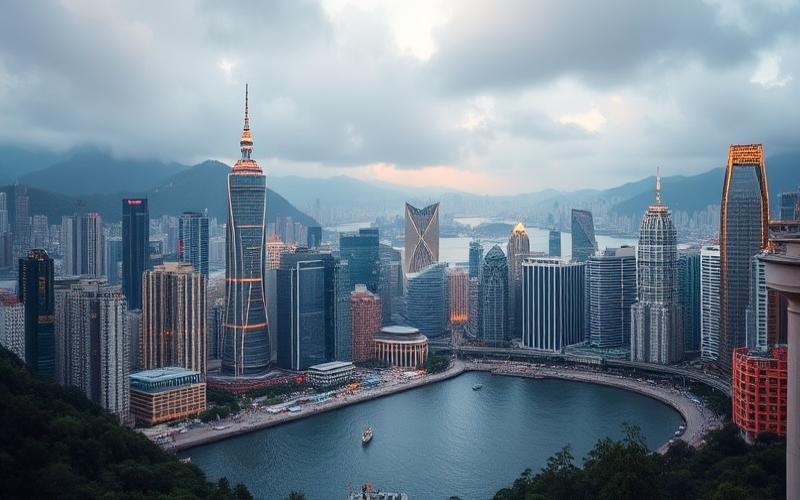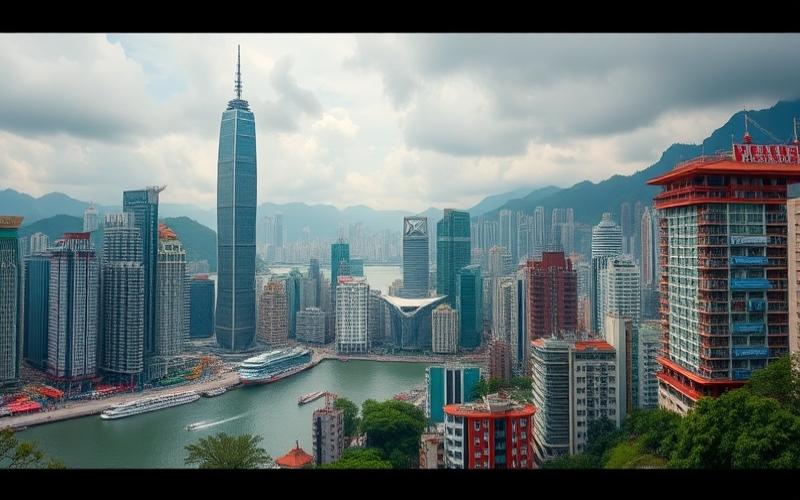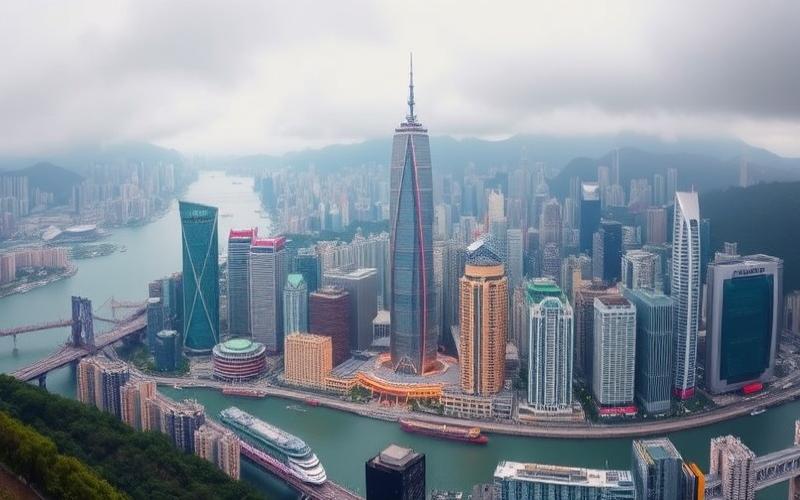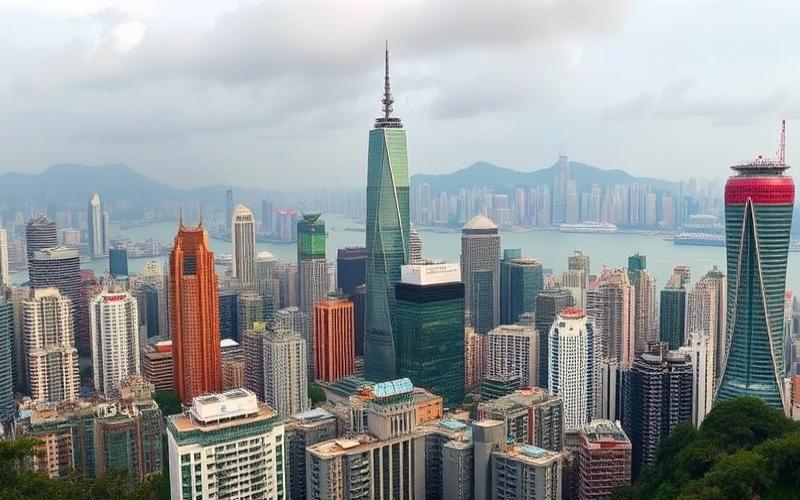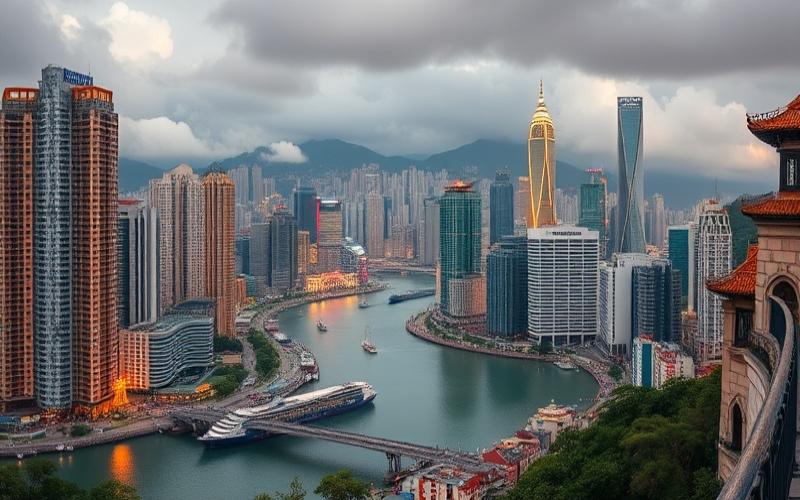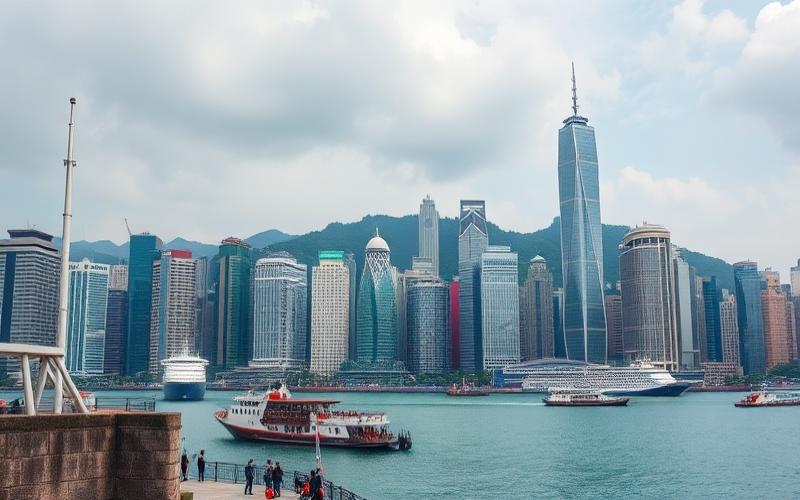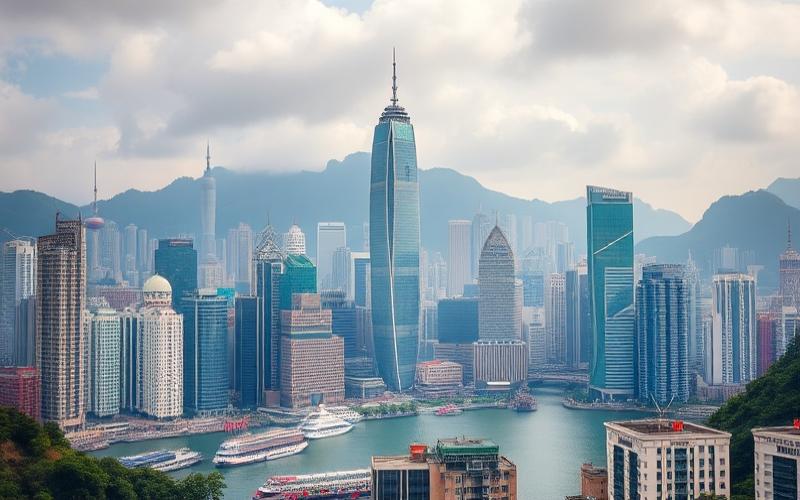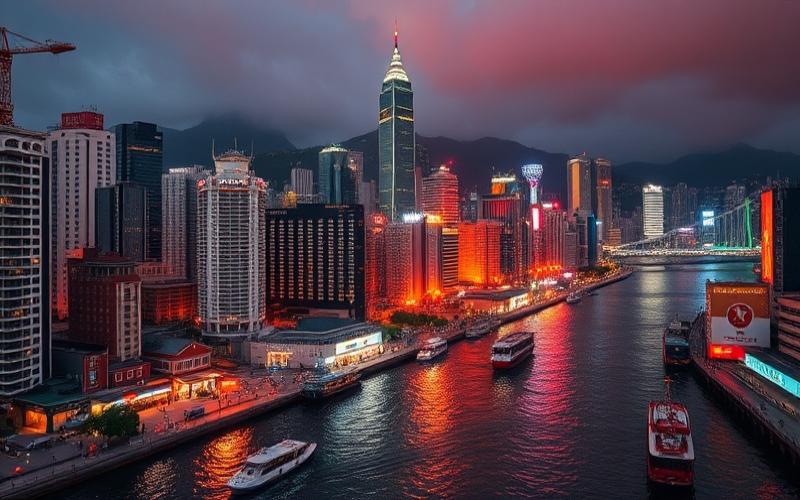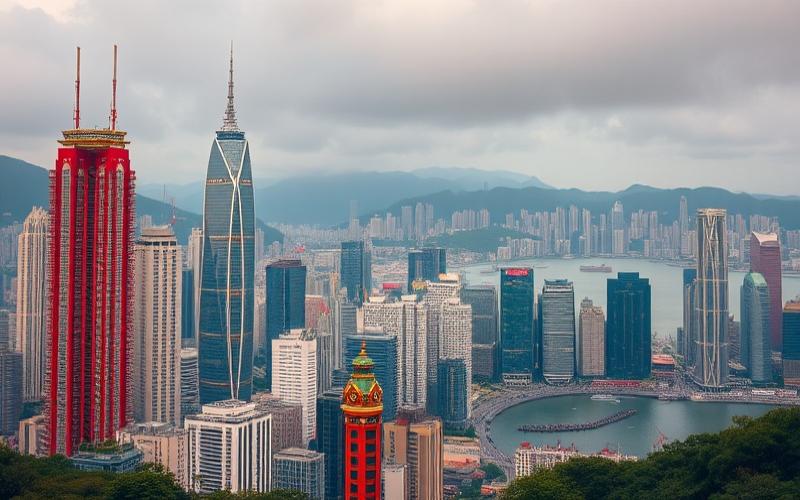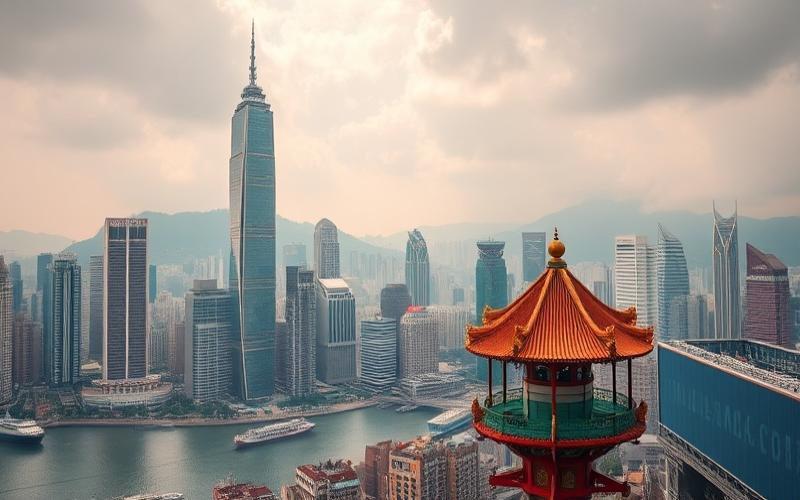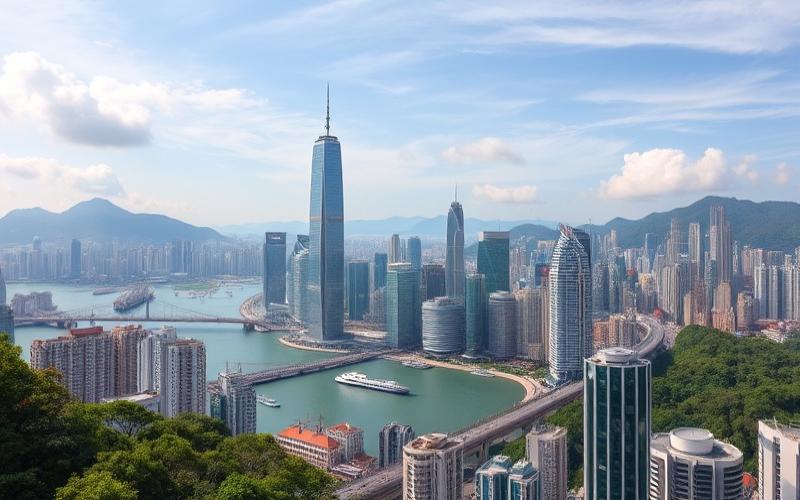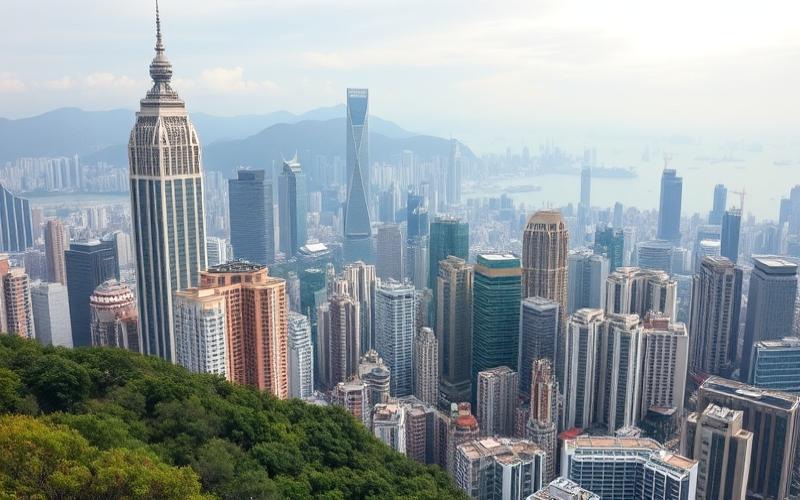
 Published on and written by Cyril Jarnias
Published on and written by Cyril Jarnias
At the Dawn of a New Decade
Economic and demographic dynamics are transforming the urban landscapes of Hong Kong, an ever-evolving global crossroads. While this historic region is already known for having some of the world’s highest real estate prices, financial analysts and real estate experts predict a spectacular price surge in some of its cities by 2030.
Key Factors Driving Price Increases
This article examines the key factors propelling this surge, such as:
- Ambitious infrastructure investments
- Government policies favoring urban development
- The growing appeal of technology and financial hubs
Redefining the Economic Face
Let’s dive into this analysis to discover which cities are becoming Hong Kong’s new crown jewels and how these changes could redefine the region’s economic face.
Growth Prospects: Which Cities in Hong Kong Show the Most Promise?
The Hong Kong cities currently showing significant potential for economic and real estate development are primarily located in the area targeted by the Northern Metropolis project, with hubs like San Tin Technopole, along with other districts supported by major government initiatives for innovation, infrastructure, and population growth.
| City / District | Key Potential Factors | Projects & Initiatives | Recent Data |
| San Tin Technopole | Technological innovation, R&D hub | Northern Metropolis, innovation center, job creation (≈160k) | Planned capacity: +2.5M residents on 30,000 urbanized hectares |
| New Territories North (Northern Metropolis) | Massive urbanization, integration with Shenzhen/mainland China | Large-scale residential and commercial development | Goal: 1/3 of Hong Kong territory redeveloped |
| Smart City Districts | Urban digitalization, AI/robotics | Smart City programs (smart mobility, smart living) | Moderate population growth but strong appeal to young professionals |
Main Factors Contributing to Potential:
Major Infrastructure Projects
- Rapid urbanization of the New Territories under the Northern Metropolis plan.
- Creation of technology hubs like San Tin Technopole dedicated to innovation and new technologies.
- Continuous improvement of transport networks to effectively connect new urban hubs with traditional economic centers.
Government Initiatives
- Massive investments in smart city technologies: AI applied to public administration and urban services (smart housing, connected mobility).
- Public platforms such as InnoEx promoting collaboration between local and international innovative project leaders.
- Stated intention to more closely integrate Hong Kong with southeastern China via an economic gateway to Shenzhen.
Demographic Trends
- Projected significant growth through active policies aimed at attracting tech talent and innovative companies.
The Northern Metropolis project aims for +2.5 million potential new residents.
Demand for modern housing is expected to grow alongside high-tech industrial development.
Synthetic List of Sector Insights:
- High expectations among real estate developers regarding future dynamism around San Tin Technopole; anticipation of a gradual but sustained price increase until 2030 due to the combined effect of:
- significant increase in working population,
- relative land shortage near the historic core,
- spillover effect around new high-end public infrastructure.
Experts emphasize that while new supply will be abundant in certain peripheral residential or commercial segments—particularly in the New Territories—it is primarily in sites directly benefiting from privileged access to innovative areas (technopoles/R&D campuses/modern university hospitals) that real estate valuation is structurally expected to exceed the regional average after full delivery between the late twenties and early thirties.
Possible Real Estate Price Projection for 2030 Horizon:
Due to:
• Expected positive migration flows
• Strategic positioning relative to the Chinese Greater Bay Area
• Continuous pipeline in digital/logistics infrastructure
a notable appreciation is anticipated (+15% to +30% depending on specific sector/location), especially for:
- new properties near technopoles,
- premium offices adapted for telework/flex office,
- “smart” residences targeting rising middle classes coming to work or start businesses locally.
In summary, it is therefore primarily San Tin Technopole along with several districts urbanized by the Northern Metropolis plan that currently concentrate economic hopes & new real estate dynamics thanks to their solid fundamentals: clear government vision, massive public investments in innovation/sustainable infrastructure & robust demographic prospects.
Good to Know:
Hong Kong, although limited in space, sees some of its cities standing out for their economic and real estate growth potential. Among them, Kowloon East is attracting attention thanks to its numerous infrastructure projects, including the expansion of the MTR metro line and the development of Kai Tak, transforming the former airport into a thriving business hub. Tsuen Wan, with its government-led urbanization initiatives and strategic position relative to its proximity to mainland China, also shows strong population growth. Real estate experts note that these developments, coupled with initiatives to stimulate local business activities, could lead to a significant rise in real estate prices by 2030. With an increasing number of tech companies establishing themselves in Sha Tin, thanks to innovation incubation policies, the city is positioned as a future pillar of Hong Kong’s new economy, making these areas prime spots for investors seeking to capitalize on future value increases.
Long-Term Investment: Hong Kong Real Estate Booming
Hong Kong real estate is currently undergoing a marked correction phase, but several factors suggest significant growth potential by 2030 for long-term investors.
| Year | Average Price (HKD/m²) | Annual Variation |
| 2021 (peak) | ~175,873 | — |
| Q1-2024 | ~135,000 | -23% vs. peak |
| Q1-2025 | 123,111 | -8.87% |
- Since the 2021 peak, residential prices have fallen by approximately 30%.
- The average price of an apartment The government recently lifted some restrictions on foreign first-time buyers to stimulate demand.
Ambitious plan to develop intercity rail infrastructure connecting Hong Kong to the Chinese Greater Bay Area.
Opportunities:
- Purchase during low period anticipating post-correction rebound.
“Bubble” risk significantly reduced according to UBS; healthier price/profitability alignment.
Challenges:
List of Main Risks:
- Potential future increase in mortgage rates if global inflation persists
- Stagnant population growth limiting structural increase in local demand
- Regional geopolitical risk/impact of Chinese economic slowdown
Recommended Best Practices for Long-Term Investment
Key advice:
- Prioritize buying in districts directly benefiting from infrastructure development or a steady influx of expatriates;
- Favor compact properties (7 years) to amortize cyclical volatility;
- Closely monitor local regulatory developments regarding property taxes or foreign ownership rights.
⚠️ The environment remains volatile: prioritize regular analysis of the regional macroeconomic context before any major decision. Consider sectoral/international diversification when possible.
In summary: despite a marked cyclical decline over the past four years, the Hong Kong real estate market offers fertile ground for savvy investors thanks to its solid fundamentals – persistent land scarcity, ambitious pro-urban development reforms – subject to rigorous risk management and a long-term vision adapted to new regional economic balances.
Good to Know:
In Hong Kong, real estate is booming, especially in districts like Kai Tak and West Kowloon, where prices could see a significant rise by 2030. According to recent statistics, luxury real estate prices increased by 5% over the past year, an indicator of strong demand and continuous growth. Government policies focused on urban development and infrastructure improvements, such as the opening of new transport routes and urbanization projects, amplify the market’s attractiveness. For long-term investors, it is essential to consider not only these economic factors but also to assess risks, such as political volatility, while targeting resilient sectors. Diversifying holdings across multiple properties and keeping an eye on public-private partnerships supporting major developments can offer profitable and robust investment opportunities.
Strategic Areas: Where Will Future Price Increases Be by 2030?
Strategic Areas Anticipating Price Increases in Hong Kong by 2030
Districts and Neighborhoods with High Development Potential
- Northern Metropolis: Border area with Shenzhen, identified as one of the two main strategic growth poles, set to become a center for technological innovation and logistics.
- Lantau Tomorrow Vision: Urban extension projects on artificial islands west of Hong Kong Island, intended to host new residential and business districts.
- East Kowloon: Urban redevelopment of industrial neighborhoods into modern tertiary activity and residential hubs.
Major Planned Infrastructure Projects
| Project | Type | Description |
|---|---|---|
| Northern Link Railway | Transport | New line linking the New Territories to the Chinese border. |
| Lantau Tomorrow Vision | Urban/Transport | Artificial islands, residential neighborhoods, road and rail axes. |
| East Kowloon Development | Urban | Transformation of industrial zones into mixed neighborhoods. |
| Smart & Green Mass Transit | Transport | Eco-friendly and intelligent public transport systems. |
| Major Road Improvements | Transport | New roads and connections to the Greater Bay Area (GBA). |
Demographic and Economic Trends Influencing Price Increases
- Influx of New Residents: The appeal of new economic hubs, especially those connected to the Greater Bay Area, promotes the arrival of talent and families, increasing pressure on real estate.
- Foreign Investments: Openness policies and proximity to Shenzhen generate growing interest from international investors in residential and commercial assets.
- Evolution of Employment Structure: The development of technology and service sectors in the Northern Metropolis attracts a young, qualified population, stimulating demand for modern housing.
Political and Regulatory Factors Impacting Supply and Demand
- Zoning Reforms: Relaxation of land use in certain areas, allowing transformation of industrial spaces into residential or office use.
- Innovation Support Policies: Government initiatives to attract high-tech companies and energize the Northern Metropolis.
- Multi-Pronged Land Supply Strategy: Diversification of sources for buildable land, including through polder projects and revaluation of urban brownfields.
- Regional Integration with the GBA: Facilitation of travel and economic exchanges, enhancing the appeal of areas near the border.
Comparison with Regions That Experienced Similar Increases
| Region (Past) | Observed Increase Factors | Elements Found in 2030 Strategic Areas |
|---|---|---|
| West Kowloon | New infrastructure (MTR, ICC) | Yes (new lines, new business centers) |
| Tseung Kwan O | Rapid urbanization, new neighborhoods | Yes (Northern Metropolis, Lantau Tomorrow) |
| Taikoo Shing | Industrial redevelopment, expatriate appeal | Yes (East Kowloon) |
Real Estate Expert Opinions and Perspectives
- Experts anticipate a price explosion in the Northern Metropolis and Lantau Tomorrow areas, due to the combination of new transport axes, strategic positioning relative to the GBA, and marked political support.
- Massive infrastructure projects and the integration of green and smart urban solutions are expected to strengthen land value, both for housing and offices.
- Past experience shows that the arrival of new transport lines and the creation of business districts are powerful catalysts for revaluation, as observed in West Kowloon and Tseung Kwan O.
Key Points to Monitor
- Acceleration of transport and urban development construction sites
- Appeal to foreign investors
- Regulatory reforms favoring densification and urban mixity
- Evolution of demand related to demographics and creation of qualified jobs
Important Highlight:
The neighborhoods of the Northern Metropolis and future developments on Lantau represent the strategic areas where Hong Kong real estate prices are most likely to experience rapid growth by 2030, driven by massive investments, increased regional integration, and proactive public policies.
Good to Know:
Kowloon East, with the rapid development of its business district and the expansion of its transport infrastructure like the future MTR Sha Tin to Central Link, is one of the areas to watch closely for a real estate price explosion by 2030. Projects like the Kai Tak commercial development and the increase in residential spaces in Tseung Kwan O attract foreign investment and a growing population, stimulating demand. Zoning reforms and government incentives further strengthen this dynamic by creating an environment conducive to urbanization. Compared to the rapid developments previously observed in West Kowloon, these trends indicate similarities in growth factors. Real estate experts warn that, unsurprisingly, these evolutions could lead to similar price increases, supported by policy initiatives and strong economic attractiveness.
Disclaimer: The information provided on this website is for informational purposes only and does not constitute financial, legal, or professional advice. We encourage you to consult qualified experts before making any investment, real estate, or expatriation decisions. Although we strive to maintain up-to-date and accurate information, we do not guarantee the completeness, accuracy, or timeliness of the proposed content. As investment and expatriation involve risks, we disclaim any liability for potential losses or damages arising from the use of this site. Your use of this site confirms your acceptance of these terms and your understanding of the associated risks.

